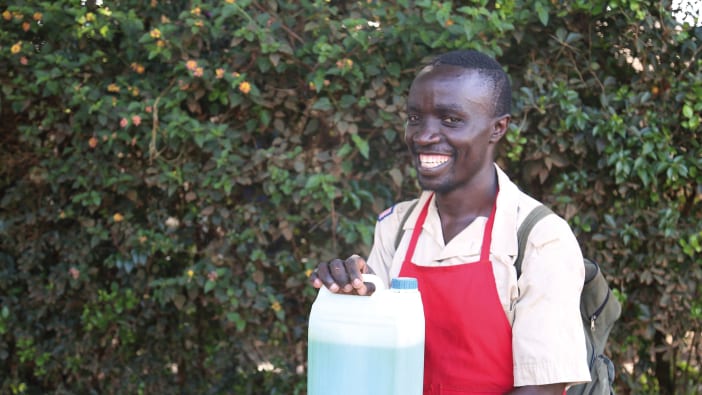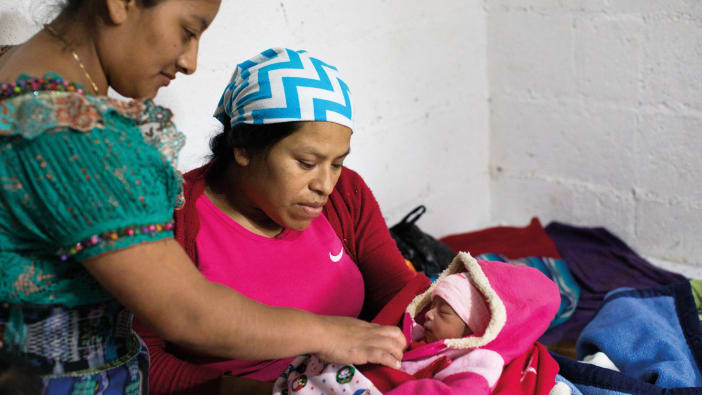by Professor Chris Curtis.
Malaria is by far the most important insect-transmitted human disease. Latest WHO estimates are that there are 2.5 million deaths each year from malaria, mainly among African children.
There are two main ways of reducing bites from malaria-carrying mosquitoes:
Insecticide spraying In the 1950s and 1960s governments in many countries organised programmes of house spraying with insecticides, especially DDT. However, this was expensive to maintain and mosquitoes became resistant to DDT. Modern pyrethroid insecticides work better than DDT; however the use of treated bed nets is now recommended to reduce insect bites.
Insecticide-treated bed nets When people sleep under treated nets, their protection from malaria is as good as it is from the spraying of homes – but much less insecticide is needed. The pyrethroid chemicals used to treat nets (and curtains) are safe even when in close contact with people. Mosquitoes are attracted to people by the air they breathe out and their body odour. If nets are untreated, mosquitoes keep searching for a hole or for a place where an arm or leg is touching the net and then bite the person. However, as they touch a treated net they either die or fly away.
Treating nets
Nets are treated by dipping them into a mixture of liquid insecticide and water. There are five steps involved:
1 PREPARE Treat nets outside. Wear long rubber gloves to protect the skin. If none are available, use large plastic bags. Collect a small measure, a large measure and a mixing container – a bowl or bucket. Wash all used nets before treatment and dry them.
2 MEASURE AND DILUTE You need to know…
- how many nets need dipping
- what size they are
- how much water they absorb
- how much chemical is required.
Finding the size (area) For a rectangular net, use the following formula – typical figures are shown for example:
Total surface area in square metres (m²)
= 2 x sides (2 x 1.5m x 1.8m = 5.4m²)
+ 2 x ends (2 x 1.5m x 1.3m = 3.9m²)
+ 1 x top (1 x 1.3m x 1.8m = 2.34m²)
(= 11.64m²)
For a circular net, lay the net flat. Measure the curved base and the height:
Total surface area in square metres (m²)
= base x height (3m x 2.2m = 6.6m²)
How much liquid does each net soak up? Cotton nets will soak up a lot more liquid than polyester nets. To find out how much liquid each net will soak up, measure an exact amount of water into a bucket or bowl – for example, 2 litres. Soak the net. Then wring into the bowl and let the net continue to drip into the bowl until it stops. Measure how much water is left. Subtract this amount from the 2 litres. Now you know how much liquid one net will hold. If all the nets are of similar size and material take this figure, multiply by the number of nets to be dipped and add a little extra (10%) for safety.
For example, if 1 net soaks up 300ml and you want to treat 15 nets, you will need:
300ml x 15 = (4500mls or 4.5 litres)
+ approx 10% (450mls)
= 5 litres approx of liquid
3 DIP Nets should be clean and dry. Soak each net in the diluted insecticide until thoroughly wet. Wring the net well and allow to drip into the bowl until it stops.
If you are treating several nets, each one can be wrung, then placed in a plastic bag and carried home to dry.
4 DRY Nets can be hung up or laid over beds to dry. Placing over beds has the advantage of killing bedbugs! As they dry, turn them a few times to make sure the insecticide is evenly distributed.
5 CLEAN UP SAFELY Packaging and leftover insecticide should either be placed in a pit latrine or buried in a pit. Never put into a river or pond. Thoroughly wash all equipment, hands and clothes with soap and water.
Increased protection
Nets should be treated twice a year. It is best not to wash them in between as this reduces the amount of insecticide.
Buying or making mosquito nets is expensive, but an investment that will protect your family for many years. Just one net can protect several young children sleeping together. Could you form savings groups to help raise funding to buy netting – both to provide nets for group members and for sale to others at a slight profit? If mosquito netting is too expensive, is there another thin, light material which could be used? (For example: old sari material in Asia, fine muslin or shamma cotton in Ethiopia.) If you have no funds to make or buy nets, consider using door and window curtains. Treat in exactly the same way with insecticide.
Professor Curtis works at the London School of Hygiene and Tropical Medicine, Keppel Street, London, WC1E 7HT, UK.
With thanks also to AHRTAG for permission to use some of their information. AHRTAG print a very useful directory for obtaining both nets and insecticide (see 'Resources').









